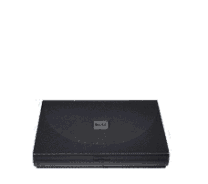Media Convertor / Media Converter
Definition: A network media convertor (or converter) is a device
which converts one type of network transmission medium (usually a cable) to
another.
| |
|

|
Note that this is nothing to do with methods of converting media files from one
format to another. The devices discusses here use 'media' in the context of the
medium that carries a
data network signal, such as cable.
In the past media convertors were extensively used in local area networks (LANs)
when there were a number of different cabling and network standards being used
but today they are mostly confined to large data centres. (Related:
SAN |
NAS)
Media Convertors, Transceivers and Media Access Units
Other terms which might describe hardware that does this conversion job are
transceiver, repeater and media access unit (MUA) although care needs to be
taken as to which terms are used in whcih cases. A transceiver is a device which
both transmits and receives something and if one side that receives uses a
physically different network connector to the other side which transmits, then
the transceiver could be said to be doing the job of a media convertor.
Confusion can arise as a transceiver doesn't necessarily have to have different
form factors either side. If a transceiver has the same cabling interface for
both the transmit and receive sides then it isn't performing a media conversion
role, it is simply a transceiver and is being used to amplify the signal. In
these cases transcievers that are purely amplifying the signal were also known
as repeaters. MUA is simply a different term for a transceiver. It was used in
the original Ethernet documentation and was therefore adopted by many
manufacturers.
Background to Media Convertors
When networks first became commercially available in the early 1980s there were
many different networking standards, both hardware and software. At the hardware
layer there were different cable forms, such coaxial and twisted pair cables,
and different versions of each of those. In addition there were various
different connectors used so even if you have the same cable you couldn’t
guarantee being able to make a connection.
Even within one company's network offerings there were often different cable
forms to be negotiated. DEC's DECnet, for example, was an Ethernet
implementation that used thick, hard to manoeuvre cables to provide a major
route through an installation. There were then thinner, more malleable 'drop
cables' to go from the thick cable, usually in a ceiling or false floor,
sometimes in conduit around the walls, to a computer or other node on the
network., Where these drop cables joined the main cable there would need to be a
media convertor to take the signal between the two cable forms, although DEC
stuck to the term MUA.
As LANs matured de facto standards eventually settled down to TCP/IP over
twisted pair (UTP) cables. Media convertors continued to be used to convert from
older cabling to more recently installed kit. Eventually this died away as older
cable installations were replaced but with fibre optic cabling still common for
high-speed links (as it has been for over two decades), there is still a need to
convert from fibre-optic to copper cabling when a fibre cable reaches a LAN.
Today's Media Convertor Market
Although it is still possible to buy media convertors to convert between
different copper cable types they are very thin on the ground. There are also
media convertors that convert between the various serial interfaces and ethernet
standards but they usually only used for specialist industrial applications. The
vast majority of the products on the market today convert between fibre-optic
and some form of copper cabling, and often they are integrated into switches.
Until fibre-optic cabling becomes cheaper and easier to terminate, or copper
cabling becomes capable of the same bandwidths and distances of fibre-optics, it
seems unlikely that this situation will change.
As media convertors are more likely to be used in data centre environments,
particularly telecommunications installations, there are a number of
manufacturers offering media convertors in a format to suit
rack mounted modules. However there are no standards for the interfaces used
and it is unlikely that a media convertor to suit one manufacturers rack will
fit that of another manufacturer. Make sure you know exactly what you are buying
before proceeding.
Beware of Confusion
There is one final thing to add, particularly as it was stated at the beginning
of this article that media convertors in this context are nothing to do with
video. It should be noted however that as video transmission places a very high
overhead on networks that many media convertors are produced for video
transmission applications. So you may well find media convertors of the kind
being discussed here on some video equipment websites alongside media convertors
in the sense of converting media software formats. Make sure you know which you
are looking at before placing an order.
|

